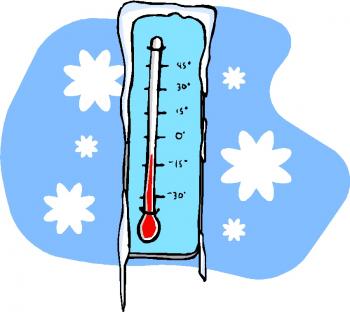Winter Weather Safety
December 19, 2018
Source:

Now that winter in Vermont is almost here, it’s important to review how to stay safe and warm to avoid serious problems like frostbite and hypothermia.
Frostbite is damage to a body part due to cold. It causes loss of feeling, movement, and color and most often affects the nose, ears, cheeks, chin, fingers and toes. Damage caused by frostbite can cause permanent damage and in severe cases even lead to amputation.
Hypothermia is when the body gets very cold and then can’t warm up by itself. Hypothermia happens after being exposed to cold water or air for too long. In cold weather, your body loses heat faster than it can be produced, which can lead to serious and dangerous health concerns. Normal body temperature is around 98.6 degrees, but hypothermia is when the temperature drops below 95 degrees.
Symptoms of hypothermia include shivering, lack of coordination, stumbling, fumbling, slurred speech, fatigue, breathing faster than usual, or urinating more than usual. If hypothermia becomes severe, the person might actually stop shivering. These symptoms can occur slowly, so it’s important to monitor yourself and others around you when you are in cold conditions. Young children, elderly people, and people who use excessive alcohol or illicit drugs are more susceptible to hypothermia. Additional risk factors for developing frostbite include smoking, previous cold injury, and exposure of the hands and arms to vibration. Hypothermia can cause serious problems, or even death, if it is not treated quickly.
When weather is extremely cold, the best thing to do is to try to stay inside. If you must be outdoors, it’s important to dress properly, including a mask or scarf that covers the mouth and face, hat, gloves, waterproof jacket and boots. You should also be sure to wear several layers of loose, light layers including a moisture-wicking layer against the skin. Clothing such as 100% cotton are not recommended since they keep in moisture, making them less effective at insulation and more likely to contribute to heat loss.
If a person is showing signs or symptoms of frostbite or hypothermia, it’s important to seek medical attention as soon as possible. They should be brought to a warm room or shelter, changed out of wet clothing as quickly as possible, and wrapped in layers of dry blankets and clothing. Any areas that are concerning for frostbite should be placed in warm (NOT hot) water. Gentle active motion of the extremity while rewarming may help. Since frostbitten areas can be numb, you should never use hot water or other outside heat sources to warm the area(s) up, since this can cause further damage. Frostbitten areas may also be rewarmed using body heat (such as placing frostbitten fingers in the underarm area). Areas with frostbite should not be rubbed or massaged to minimize damage to the tissue. Avoid walking on frostbitten feet; this can increase tissue damage. If walking is necessary for evacuation, do not rewarm the feet before walking. If possible, pad or splint the affected area to minimize injury. Thawing is usually complete when the tissue is red or purple and soft to the touch. This usually takes 15 to 30 minutes. Rewarming of frostbitten tissue may be painful.
Link to CDC website about safety during a winter storm: https://www.cdc.gov/disasters/winter/duringstorm/outdoorsafety.html